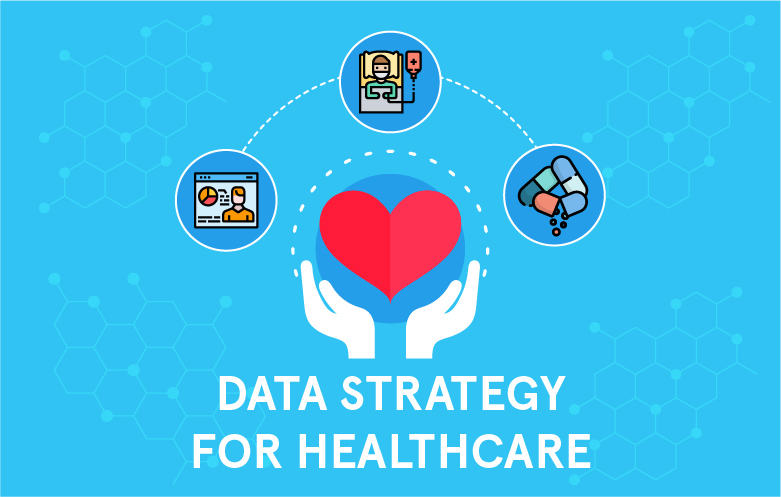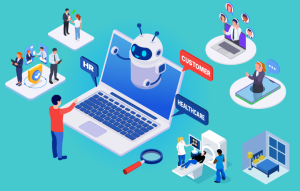Health is the primary factor for our existence, sustenance and evolution. On the other hand, technology always strives to enhance our lives by bettering our health and lifestyles. And the latest and most popular technology that we hear about and use is artificial intelligence.
Undoubtedly, the biggest benefactor of artificial intelligence is the healthcare industry as AI has the ability to significantly boost patient care and help in earlier detection of diseases. It also helps in compliance adherence as well as reductions in cost and patient readmissions, some of which we will cover a little later in the post.
AI comes to the rescue, but how?
The term AI has been used a lot more widely now than before, where specific software systems are also being referred to as artificial intelligence. But how does AI come into the picture? At the crux of it all lays data, the foundation for its very existence. With the subsets of AI taking off, namely machine learning and deep learning, we see the capability of AI in terms of algorithms, software and not just robotic limbs as portrayed in mainstream media.
This post focuses on non-robotic AI. So, robotic surgeries and assistance aside, predictions, forecasts and understanding take center stage. The key is to give these intelligent systems the ability to learn from context and not limit their functioning in a linear manner – what differentiates AI from its subsets.
Read: 6 myths about artificial intelligence
Let no data go to waste
The question is not to develop AI from scratch. The cost, effort and time required will make it tougher than planning a trip to the moon. Fortunately, there are numerous companies that have created algorithms and models which can be trained further with your own data. As mentioned earlier, data is the base. And to achieve a high degree of context and accuracy, especially on the lines of artificial intelligence, the first thing that is required is a sound data strategy. Here is a detailed blog post on the importance of a data strategy along with steps to get started with AI.
With an appropriate data strategy in place to leverage the benefits of AI for the healthcare industry, let’s take a quick look at three very important use cases in healthcare.
AI solutions for precision medicine
Generalized medicine has been the norm for treating patients suffering from numerous ailments. There is a major ‘trial-and-error’ aspect to this treatment where patients are monitored and tested according to how they respond to the medication. Precision, or personalized, medicine can completely change the entire scenario. Each patient group’s lifestyle and genetic makeup can help in determining the right medicines and dosages, which can gain accuracy over time.
- Predict the likelihood of diseases for particular patients
- Provide appropriate medication to avoid certain illnesses and ailments
- Reduced emergency situations and risk for patients
- Ensure high patient care quality with less risk
Reduce hospital readmissions
Another area of concern for the healthcare industry is patient readmissions. According to a report published on the National Center for Biotechnology Information (NCBI), “About 1 in 5 Medicare fee-for-service patients discharged from the hospital is re-hospitalized within 30 days.” The benefits of reducing hospital readmissions are plenty as readmissions are an expensive affair for hospitals. In most cases, they are avoidable but it is still a major challenge to reduce the same.
Government legislation penalizes healthcare organizations which have higher readmission rates. The reasons that contribute to higher readmission rates often stem from inadequate follow-up care and poor discharge procedures. This can be circumvented by combining clinical, operational, financial, and social data in order to identify appropriate treatments and programs that deliver desirable outputs and fit the hospital’s budget.
AI can provide clinicians with;
- Daily updates on patients’ status
- Predictions on which patients are more likely to need readmission
- Insights on how to reduce the risk of readmission
- Reduction in wastage of hospital resources
Compliance adherence
If not for regulatory compliance, the state of the medical world would be muddled with legalities, certainly more than what exists. Healthcare organizations are required by law to submit reports to governing bodies to ensure that they are adhering to compliance standards. Due to the ever-changing compliance policies and disparate data from external sources, it becomes difficult to generate analytical reports for the application of complex business rules and statistical calculations.
AI algorithms differ from others as they are adaptive of dynamic parameters and data points, and can help healthcare firms to track and maintain the internal data with standardized datasets from the government, greatly easing the task of data managers. The system can cross-reference entire datasets with compliance policies and report anomalies that indicate any issues.
Healthcare firms are able to;
- Evaluate clinical performance for optimal compliance adherence
- Compare compliance standards with various divisions, regions, groups, and areas
- Eliminate the complexities of multiple systems
4 steps to AI implementation

AI strategy and planning workshop
Our 1 week workshop on AI strategy and planning focuses on cultivating the approach towards inculcating AI into your business.
It is never too late to start
All the use cases stated above have been a major headache for healthcare facilities where they are required to spend long hours and have their staff constantly work on finding information and creating hypotheses. What AI brings to the table, unlike ever before, is transparency and context. Implementing AI is, by no means, an easy task, but it all starts with how you treat data and what algorithms and models you use. This makes data collection and its subsequent storage, extremely important – something that healthcare organizations have tons of. So, plan your data strategy and reap the benefits of artificial intelligence in your healthcare facility.









